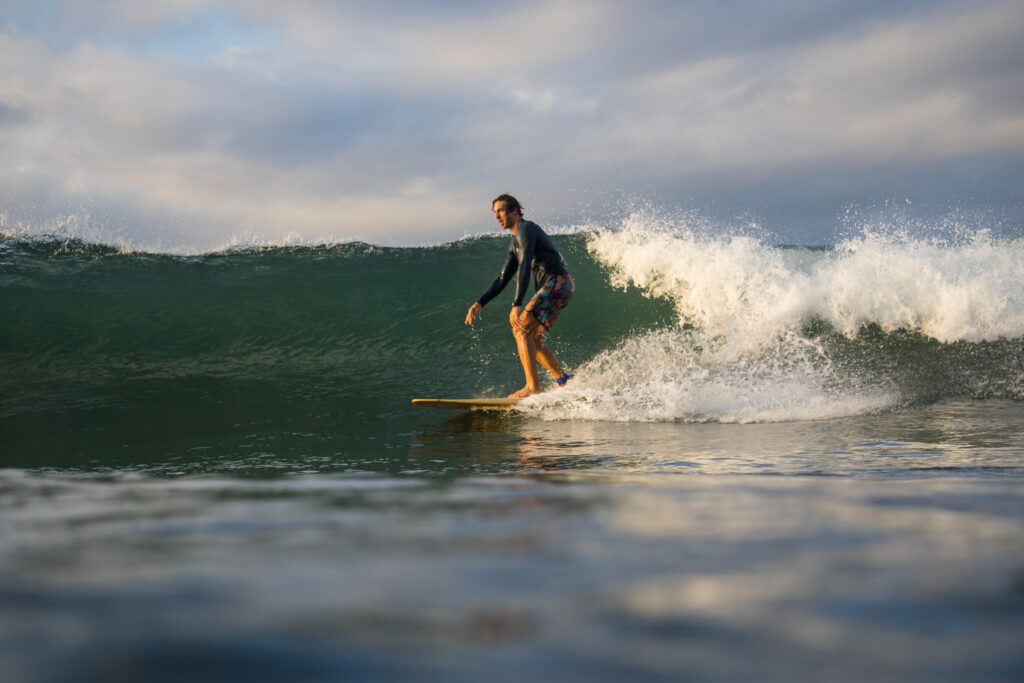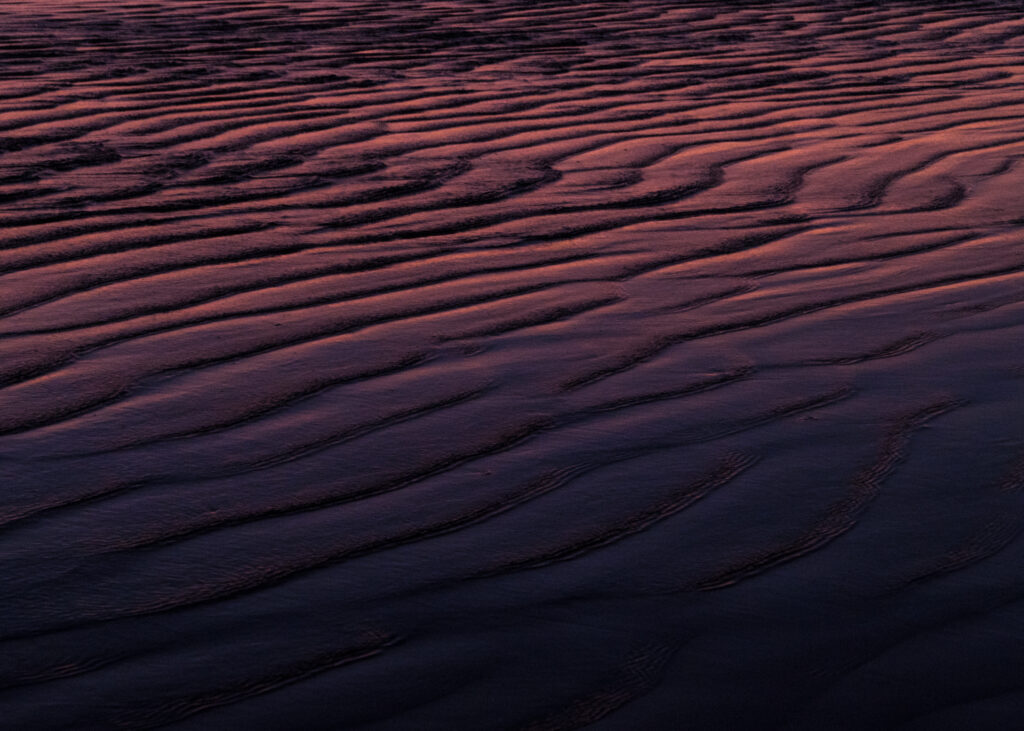Surfing is one of the most unique and challenging sports to learn for the simple fact that the “playing field” is constantly changing from moment to moment. This can make it extremely difficult for beginner surfers to rack up consistent repetitions.
Here at Bodhi Surf + Yoga, we have guided thousands of beginner and intermediate surfers in the art of “reading” the ocean. How? By teaching them how to recognize the different factors that affect the quality of the waves on any given day (a skill that can take years to develop!).
As a former Ocean Lifeguard for the City of San Diego, I cannot stress enough the importance of being able to read the ocean and identify potential threats before they happen.
This post will teach you our methodology for reading the ocean. It will also provide you with the basic knowledge to decide where and when (what time of day) you should surf based on the surf forecast.
You will also learn other key elements of the surf report like how waves break at low tide versus high tide, how offshore winds can result in nicely groomed waves, and how swell period and swell direction affect wave size.
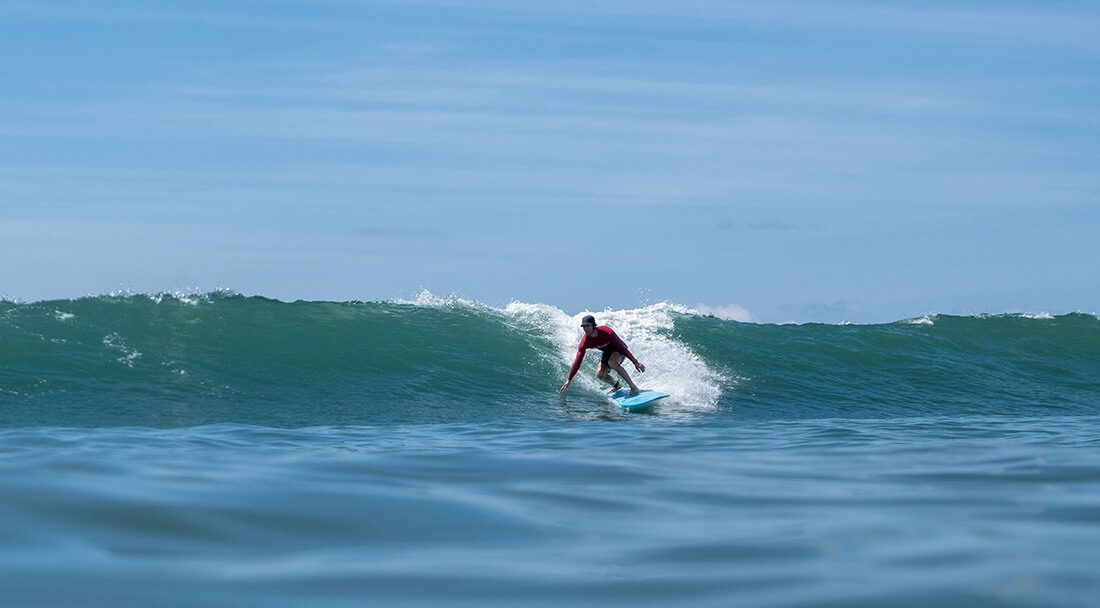
What is a surf report?
All surfers should be able to describe the ocean conditions in a way that allows other experienced surfers to know what to expect from the surf that day.
For example, if I am on the phone describing ideal surf conditions to a surf buddy, I might say the following:
There is offshore wind, the tide is transitioning from low to high, the average wave height is about 4 feet, and there is a 15 second interval between waves.
However, if I am describing poor surf conditions, I might say the following:
There is a strong onshore wind, the tide is extremely low, the average wave height is about 2 feet, and the interval between waves is 8 seconds.
Based on my surf report of the current conditions, my surf buddy should be able to determine whether or not they want to go surfing that day, and if so, at what time.
As you may have gleaned from the previous examples, there are several key factors beginner surfers should pay attention to when reading a surf forecast and delivering a surf report.
At Bodhi Surf + Yoga, our ISA certified surf instructors use the acronym WTWT to help our students remember the key elements of a detailed surf report:
- Wind
- Tide
- Wave size
- Threats
Let’s go through each component in more detail.
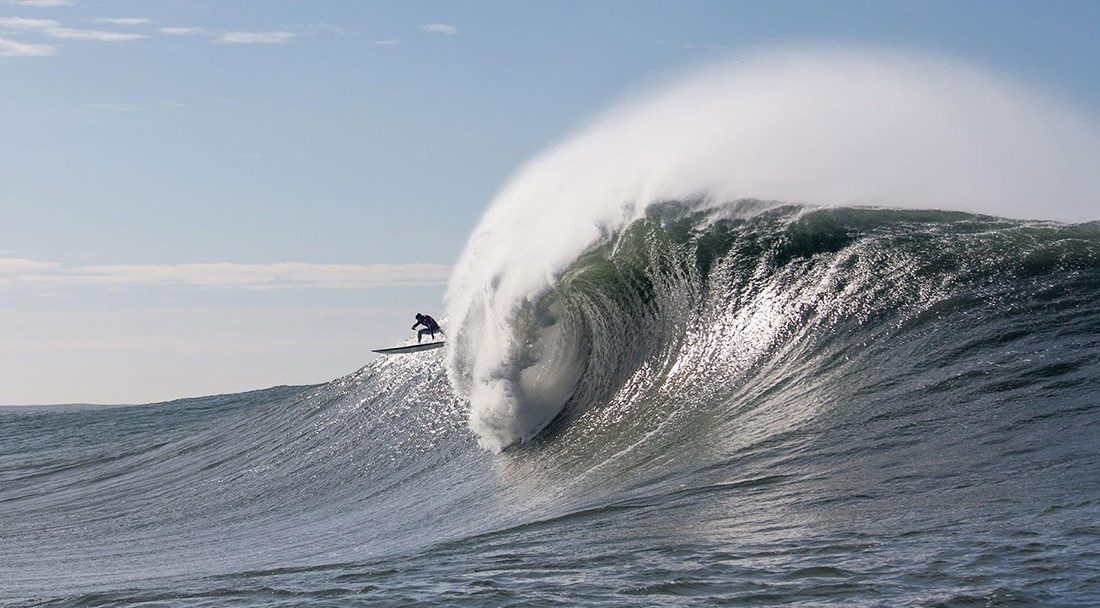
Wind: How does wind affect wave quality?
In general, surfers use two terms to describe the effect of wind direction on the ocean surface: glassy or choppy.
What does an ideal ocean surface look like?
A glassy ocean surface is consistent with light or offshore wind and is preferred to a choppy ocean surface (resulting from onshore wind). Paddling is rendered much easier with a glassy ocean surface, and waves will typically break in a more organized and consistent manner.
If there is wind present, surfers prefer the wind direction to be offshore (wind blowing from the land out to sea). This type of wind grooms the face of incoming waves and forces the waves to stand up taller before breaking, resulting in steeper, hollower waves.
What time of day has the least wind?
The temperature gradient between the ocean and the land at your local beach will often determine the wind direction and strength. As a rule of thumb, if the ocean temperature is similar to that of the abutting land, there will likely be minimal wind present.
It is for this reason that many experienced surfers prefer to surf early in the morning before the sun has had a chance to heat up the land. Conversely, the late in the afternoon when the land is starting to cool down.
Your best bet for a smooth ocean surface is either early in the morning (first light of day) or an hour before sunset when the wind is likely to be calm or blowing in a favorable direction (aka offshore).
Tide: How do different tides affect the surf?
A tide, as defined by the book The Essentials of Surfing, is “a local change in the water level of the ocean due to the gravitational pull of the sun and moon.”
If you frequently visit the same beach, you are likely to be able to tell from simple observation whether it is low tide, mid-tide, or high tide.
However, if you are visiting a beach for the first time, you might want to check the tide level beforehand. You can do so by using a surf forecasting website or app like Magicseaweed or Surfline.
As a surfer, it is important to pay attention to the tide and whether it is coming in or going out. Why? Well, the tide can affect the speed and power of breaking waves.
At a beach break, for example, low tides often cause waves to become very steep and break too fast for beginner surfers.
On the contrary, a very high tide might slow down the breaking waves so much that they become difficult to catch.
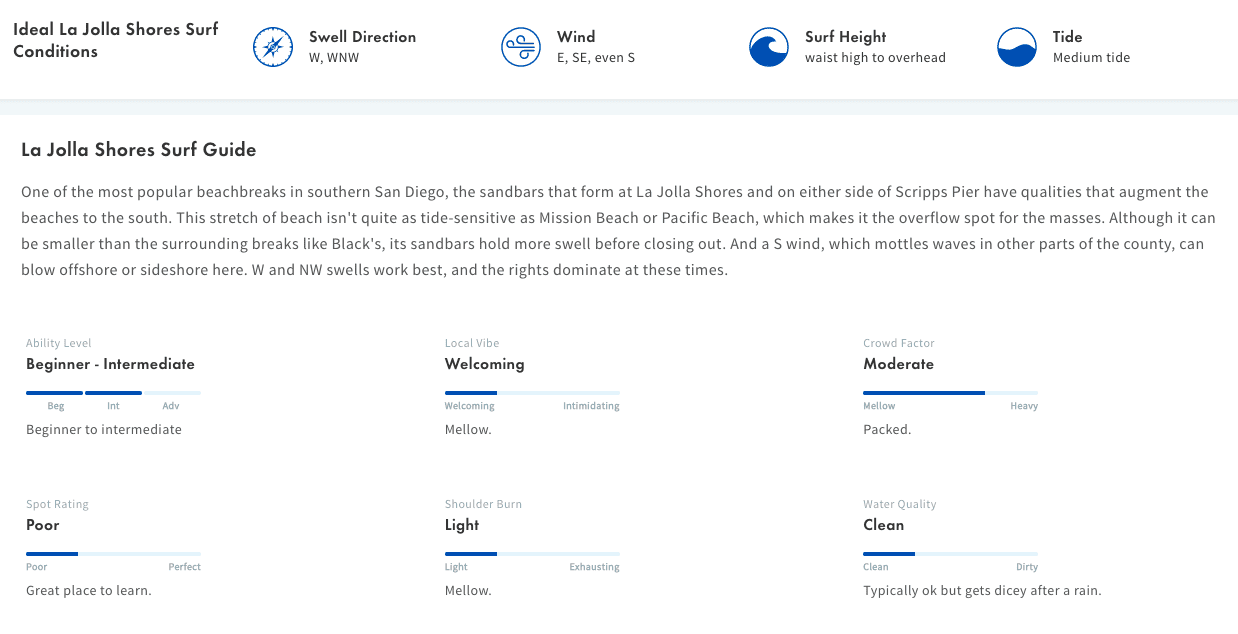
We recommend using an app like Surfline or Magicseaweed before heading to a new surf spot so that you can understand which tide will produce the most favorable waves for your skill level.
It is always a good idea to ask a local, experienced surfer about the ideal tide for the specific break where you will be surfing.
Wave size: What factors determine wave height?
If you are a beginner surfer, understanding where waves come from is an important aspect of your learning curve.
Where do waves come from?
To best understand how surfable waves form, let’s examine a passage from William’s Finnegan’s Pulitzer Prize-winning memoir, Barbarian Days: A Surfing Life:
A storm out at sea churns the surface, creating chop — smaller and then larger disorganized wavelets, which amalgamate, with enough wind, into heavy seas. What we are waiting for on distant coasts is the energy that escapes from the storm, radiating outward into calmer waters in the form of wave trains — groups of waves, increasingly organized that travel together. Each wave is a column of orbiting energy, most of it below the surface. As it travels, it becomes more organized — the distance between each wave in a train, known as the interval, increases. As waves from a swell approach a shoreline, their lower ends begin to feel the bottom. The visible part of the wave grows, its orbiting energy pushed higher above the surface. The resistance offered by the sea bottom increases as the water gets shallower, slowing the progress of the lowest part of the wave. The wave above the surface steepens. Finally, it becomes unstable and prepares to topple forward — to break.
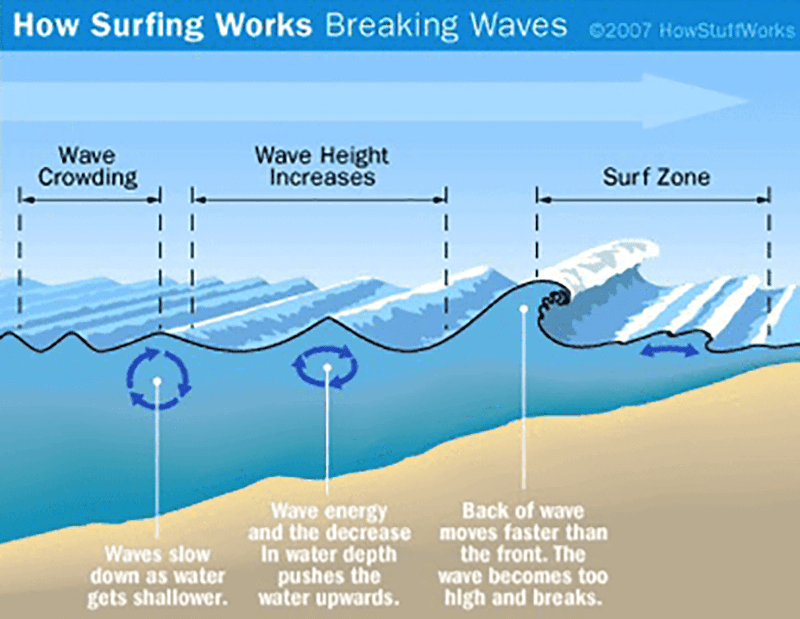
How do waves break?
As stated above, waves break when their downward spiraling energy is forced upward at a particular depth. Therefore, the shape of the coastline and the bottom contour (or bathymetry) at your local surf spot affect both the shape and power of the breaking waves.
Breaking waves can be classified as either spilling or plunging.
- Spilling waves: move along a gradually sloping bottom contour until they “spill” or crumble forward at the crest.
- Plunging waves: move along a steep sloping bottom contour (such as a reef break) until they “plunge” or curl over at the crest.
Spilling waves typically break with less force than plunging waves and are better suited for
beginner/intermediate surfers.
Why do some locations get bigger waves than others?
Wave height will vary based on swell size, swell direction, and swell period (the distance between two waves, measured in seconds). These will depend on the location and scale of the storm that produced them.
In the Pacific Ocean, for example, massive winter storms near the Aleutian Islands generate long interval ground swells (10-20 seconds between waves). They then travel hundreds of miles uninterrupted until they run into the many reef breaks surrounding Oahu’s North Shore, resulting in some of the largest and most powerful waves on the planet.
If you are a beginner surfer, you should start out surfing at a beach with a sandy bottom and “soft” spilling waves, as opposed to a point break or reef break where the waves are more powerful and the ocean bottom is less forgiving.
As a beginner surfer, you should be looking for an average wave height of 2-3 feet.
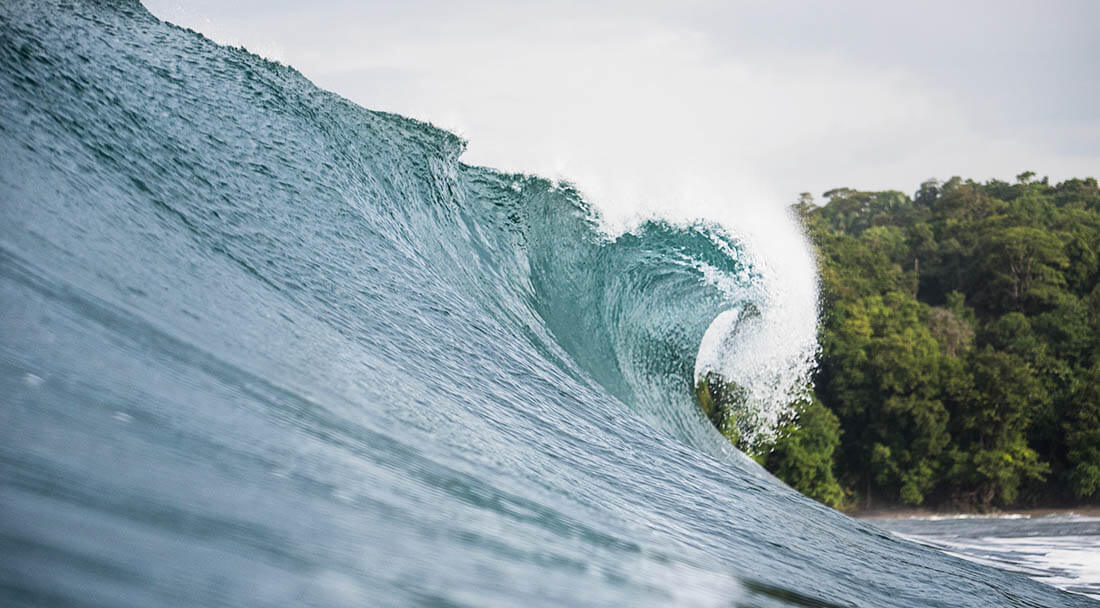
Threats: What are some surfing dangers and hazards?
Before you head out for a surf session, perform a google search to identify potentially dangerous marine life at the beach where you will be surfing.
Dangerous marine life
- Stingrays
- Jellyfish
- Sea urchins
- Sharks
- Crocodiles
Other hazards
- Surfers and beachgoers
- Floating debris
- Rocks and coral
- Adverse weather conditions
Rip currents
Rip currents occur when large waves remove sand from the seafloor. This creates an underwater channel through which water travels out to sea. They are easily identified if you know what to look for.
Typically, a strong rip current will contain choppy, brown water as sand and debris are transported out to sea.
While surfing, if you find yourself caught in a rip current that is taking you away from land, paddle your board parallel to the coastline until you reach calmer waters before paddling back to shore.
Learn more about rip currents here.
How to use a surf forecasting website
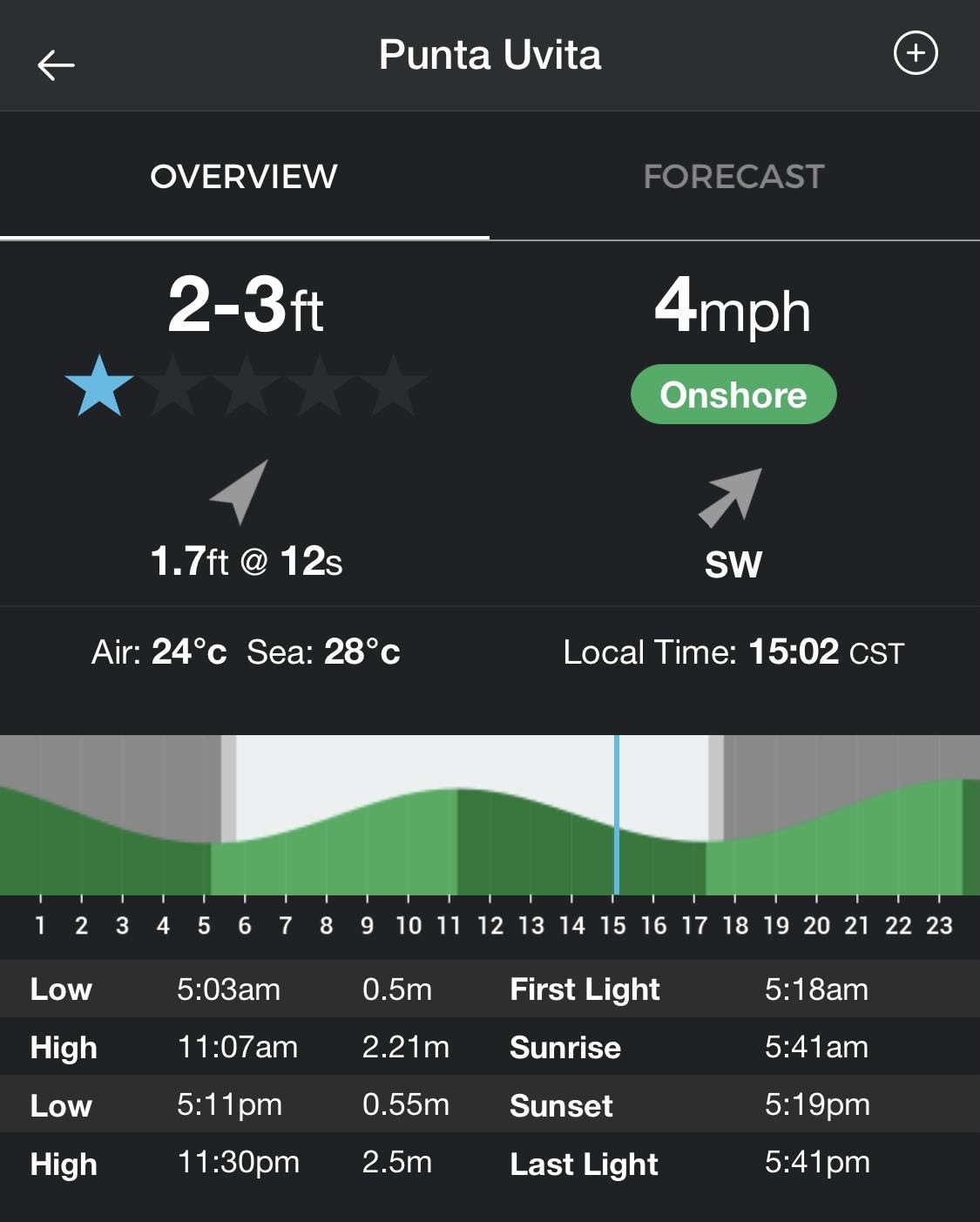
When using a surf forecasting website or app like Magicseaweed (pictured above), it is important to note the key factors mentioned above such as tide, wind direction, wind speed, swell size, swell interval, and average wave size to help you decide if and when you’d like to surf that day.
Upon reading the surf report above, I can see that the swell size is 1.7 feet and the swell direction is coming from the southwest. Additionally, the interval between waves is 12 seconds, and the projected wave height is 2-3 feet (perfect for beginners).
I can also see that the wind is a light 4 miles per hour onshore, which means the surface texture of the ocean should be fairly glassy.
Because of the small(ish) wave size, long(ish) interval between waves, and light wind, I would likely decide to go surfing based on this surf report.
The only question that remains is: what time of day should I go surfing?
Punta Uvita, our local beach break here in Bahia-Uvita, Costa Rica, produces the best-shaped waves at mid-tide with the tide coming in (transitioning from low to high). If I were using the tide chart above, I would likely choose to go surfing around 7am.
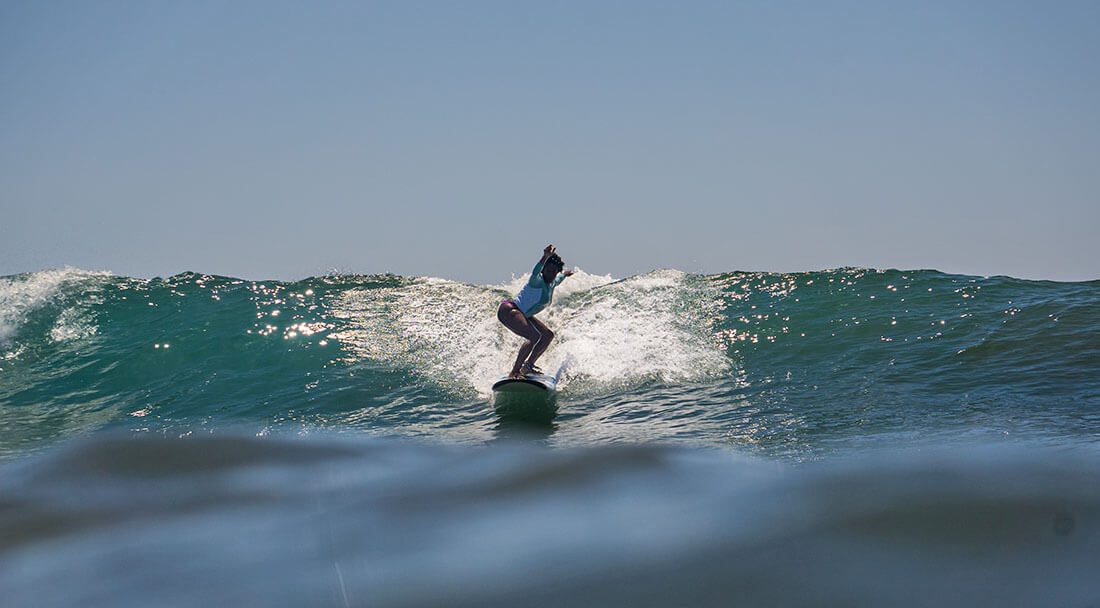
Advice from Bodhi Surf + Yoga’s surf instructors
Here at Bodhi Surf + Yoga, we encourage our surf students to become independent surfers by learning how to read the ocean and generate a surf report on their own — without relying on a surf forecasting website like Magic Seaweed.
We advise our students to observe ocean conditions for at least 15 minutes prior to paddling out for a surf session so they can hone this skill and start to understand the intricacies of their local surf spot.
Furthermore, it is always a good idea to talk to more experienced surfers as they will be able to help you identify the ideal conditions for surfing at that particular break.
Understanding how to read a surf report will undoubtedly help you pick an optimal time to surf with good waves and weather conditions.
Want to learn to surf with an International Surf Association certified instructor? Inquire now!
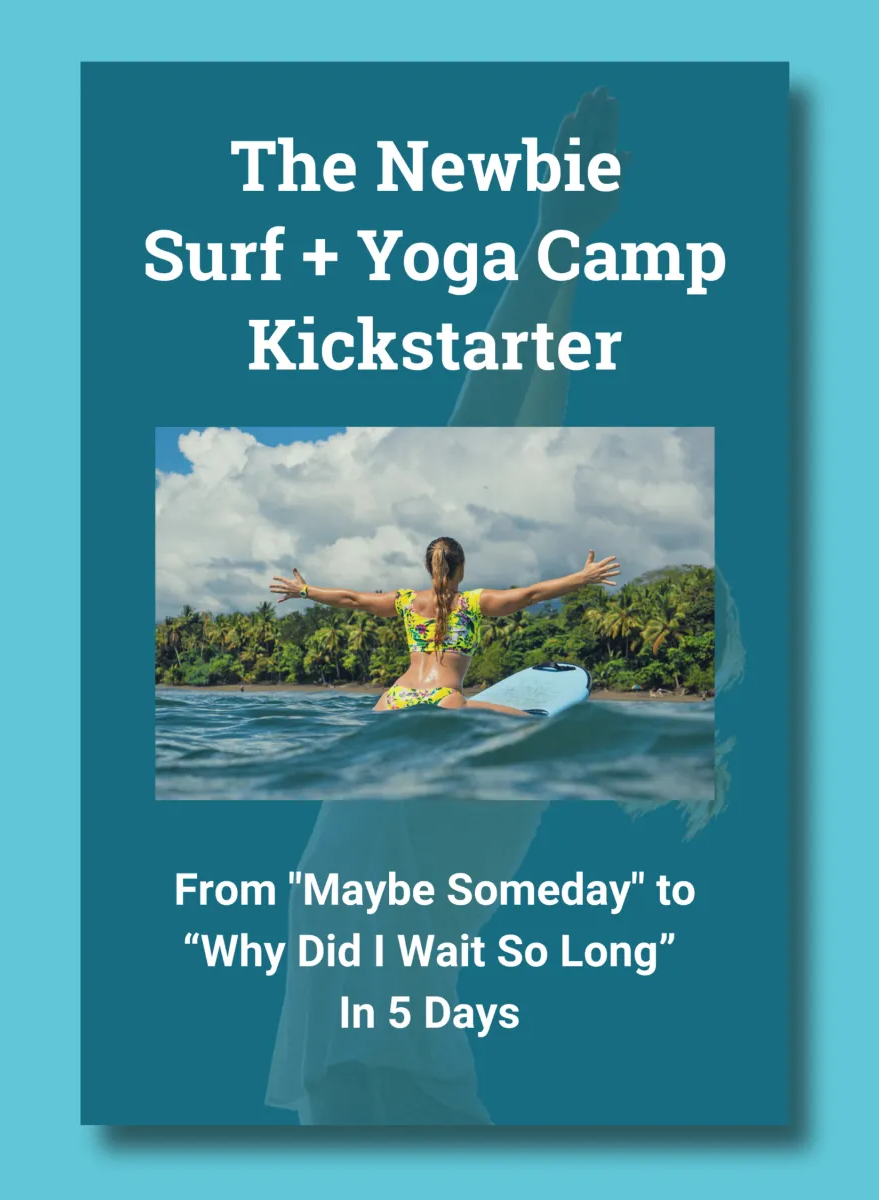
For First-Time Surfers
You Don't Need Experience. You Don't Need Gear. You Just Need This.
Our free 5-day email course that reveals the 5 myths keeping beginners at "I'm not ready" instead of catching their first wave and finding inner peace-and how to overcome them fast.
Change the heading on the Separator tab ->
Search
The Newbie Surf + Yoga Camp Kickstarter
Bust the 5 biggest myths about going to a surf and yoga camp so you can stop procrastinating and start catching waves - with our FREE 5-day email course.
Change the heading on the Separator tab ->
Most Read Blogs
What is the Meaning of Anjali Mudra?
May 27, 2020
Fitness for Surfers: Workouts, Exercises & Training
February 10, 2022
The Best Places to Eat in Uvita, Costa Rica
May 19, 2022
How to Get From SJO to Costa Ballena, Costa Rica
May 31, 2018
Change the heading on the Separator tab ->
Categories
Categories
- Bodysurfing (5)
- Food (8)
- Responsible Business (6)
- Surfing (66)
- Travel (65)
- Yoga (44)
Change the heading on the Separator tab ->
Newsletter
Thanks for subscribing! Please check your email for further instructions.
Change the heading on the Separator tab ->
Follow Us
Bodhi Surf + Yoga
Change the heading on the Separator tab ->
Read more
5 Reasons Why a Surf + Yoga Retreat Should Be Your Next Big Bucket List Adventure
Words by Travis
If you’re reading this, chances are you’re experiencing a little restlessness. You’ve scrolled past the passive beach vacations and you know, deep down, that your next trip needs to be different. It…
Small Things That Make A Big Difference to Progressing Your Surfing
Words by Guest Post
Welcome to the first of our three-part series covering the small things that make a big difference to your surfing! You are most likely reading this because you’ve taken some surf lessons…
Sandbars for Surfers: Everything You Need to Know and More
Words by Guest Post
Ever wonder what a sandbar is? When it’s low tide you can see them, but what happens when the ocean covers them? Most surfers may just look at the waves on the…


